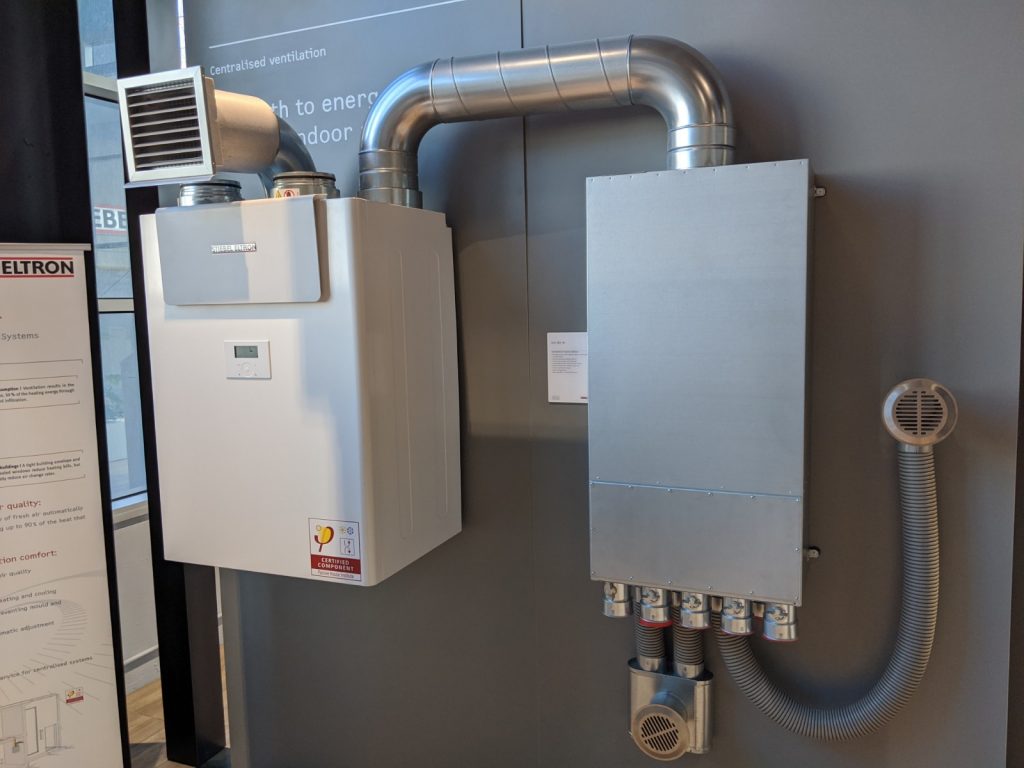How Heat Recovery Ventilation Boosts Indoor Air High Quality and Reduces Energy Prices
Heat Recovery Ventilation (HRV) systems play an important duty in improving indoor air high quality while all at once lowering energy expenses. By effectively trading stale interior air with fresh outside air, HRVs help keep perfect humidity and lower pollutants. In addition, their capability to recover heat from outward bound air lessens the strain on home heating and cooling down systems. As power expenses remain to rise, understanding the full potential of HRV systems comes to be significantly important for property owners and businesses alike.
Comprehending Heat Recovery Ventilation Systems

Heat recovery ventilation (HRV) systems play an essential role in boosting interior air quality, especially in modern-day, energy-efficient buildings. These systems are designed to move warm from the outbound stagnant air to the inbound fresh air, thus reducing power loss while keeping perfect temperature degrees inside. HRVs consist of a heat exchanger, followers, and ductwork, assisting in the continual flow of air. By eliminating interior toxins and introducing fresh air, HRVs aid to stabilize humidity levels, avoid mold and mildew growth, and minimize allergens. The performance of HRV systems hinges on their capability to recoup approximately 80% of the heat from the tired air, advertising power conservation while making certain a healthy indoor environment. Their combination is vital in achieving lasting living methods.
The Importance of Indoor Air Quality
Indoor air quality (IAQ) is an essential element affecting the wellness and wellness of residents in any kind of setting. Poor IAQ can lead to numerous health and wellness issues, consisting of respiratory problems, allergic reactions, and exhaustion. Furthermore, it can intensify status quo such as bronchial asthma. Aspects adding to reduced IAQ include toxins from interior sources like cleaning up representatives, mold, and insufficient ventilation. Preserving good IAQ is vital for promoting a risk-free and comfortable living or functioning area. Efficient strategies to enhance IAQ involve routine surveillance of air quality, proper ventilation systems, and decreasing making use of harmful materials inside your home. By focusing on IAQ, people can assure a much healthier atmosphere that promotes productivity and total high quality of life.
Power Performance Conveniences of HRV Equipments
Many homeowners and building managers are increasingly acknowledging the energy performance advantages of heat recovery ventilation (HRV) systems. By moving heat from worn down interior air to incoming fresh air, HRV systems markedly lower the energy required for home heating and air conditioning. This procedure Clicking Here reduces reliance on typical HVAC systems, leading to lower power expenses. Additionally, HRVs help keep a well balanced indoor environment, avoiding too much heating or cooling down needs. The capability to recoup as much as 90% of the warmth from outward bound air additionally sustains sustainability efforts by minimizing general power consumption. Consequently, HRV systems add not only to set you back savings however likewise to a lowered carbon impact, lining up with the growing focus on energy-efficient structure techniques.
Installation and Upkeep Considerations
The effective application of warmth recovery air flow (HRV) systems calls for mindful factor to consider of setup and maintenance aspects to assure peak performance. Proper positioning of the HRV system is necessary, as it should be installed in an area that maximizes air flow while reducing sound disturbance. Furthermore, ductwork must be suitably sized and shielded to prevent energy loss. Routine maintenance, consisting of filter substitute and system cleaning, is vital to protect optimum functionality and indoor air high quality. Proprietors must develop web link a regular maintenance timetable to identify and attend to possible concerns before they rise. Cooperation with knowledgeable specialists throughout both installation and maintenance stages can boost the durability and performance of HRV systems, eventually resulting in much better indoor settings and reduced power expenses.
Real-World Applications and Success Stories
Checking out real-world applications of warm healing ventilation (HRV) systems reveals their substantial influence on indoor air top quality and energy performance throughout various setups. In domestic structures, property owners have reported enhanced air top quality, resulting in less allergies and respiratory issues. Schools carrying out HRV systems have noted improved trainee focus and decreased absence due to much better ventilation. Business buildings, such as offices and retail areas, have experienced lower energy costs and enhanced staff member productivity. A business office in a temperate climate accomplished a 30% decrease in energy expenses after setting up an HRV system. These success tales demonstrate that HRV innovation not only adds Related Site to much healthier atmospheres but also provides tangible financial advantages, making it an important investment for various fields.
Frequently Asked Inquiries
Can HRV Solutions Decrease Allergens in Indoor Air?
The effectiveness of HRV systems in reducing interior allergens mainly depends upon their capability to filter and exchange air. HRV Heat Recovery Ventilation. By continuously changing stale air, these systems can substantially reduce irritant degrees throughout indoor environments

Exactly How Does Moisture Affect HRV System Performance?
Humidity significantly affects HRV system performance; high degrees can cause condensation, reducing efficiency, while low humidity might enhance air exchange. Balancing humidity is essential for perfect procedure and maintaining interior air high quality.
Are HRV Solutions Noisy Throughout Procedure?
HRV systems can generate varying sound levels during operation, depending on their layout and installation. Some devices run silently, while others may generate noticeable sound, particularly at higher air movement settings or when inadequately maintained.
What Is the Ordinary Lifespan of an HRV System?

Can HRV Equipments Be Made Use Of in All Climates?
HRV systems can be used in various environments, yet their efficiency may vary - HRV Heat Recovery Ventilation. In severe temperature levels, adjustments or supplemental systems may be essential to assure excellent performance and comfort while keeping interior air top quality